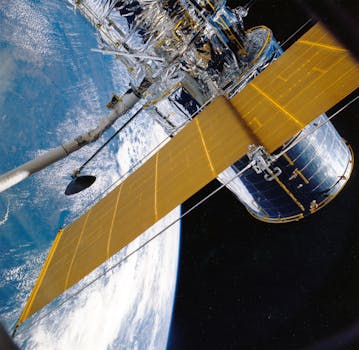The Future of Satellites: Revolutionizing Global Communication and Exploration
The future of satellites is rapidly evolving, with advancements in technology and innovation transforming the way we communicate and explore space. From improved global connectivity to enhanced space exploration, the next generation of satellites is set to revolutionize various industries and aspects of our lives.

Introduction to the Future of Satellites
The future of satellites is a topic of immense interest and excitement, with the potential to transform the way we communicate, navigate, and explore space. With the rapid advancement of technology and innovation, the next generation of satellites is set to revolutionize various industries and aspects of our lives. The focus keyword Future of Satellites is at the forefront of this transformation, driving the development of new satellite technologies and applications. In this article, we will delve into the future of satellites, exploring the latest trends, advancements, and innovations that are shaping the industry.
The use of satellites has become an integral part of our daily lives, from providing global communication and navigation services to enabling space exploration and scientific research. The next generation of satellites is expected to play an even more critical role in shaping the future of humanity, with applications ranging from improved global connectivity to enhanced space exploration and environmental monitoring.
Advancements in Satellite Technology
One of the key drivers of the future of satellites is the advancement of satellite technology. Recent breakthroughs in areas such as materials science, propulsion systems, and antenna design have enabled the development of smaller, more efficient, and more powerful satellites. These advancements have opened up new opportunities for satellite applications, from low-Earth orbit constellations to deep space missions.
The development of small satellites is a significant trend in the industry, with these smaller satellites offering a range of benefits, including lower costs, increased agility, and improved launch flexibility. Small satellites are being used for a variety of applications, from Earth observation and communication services to space exploration and scientific research.
Another area of advancement is in satellite propulsion systems, with the development of new propulsion technologies enabling satellites to operate more efficiently and effectively. These technologies include advanced ion engines, Hall effect thrusters, and other innovative propulsion systems that are being used to extend the lifespan of satellites and enable more complex missions.
Applications of the Future of Satellites
The future of satellites has a wide range of applications, from improved global communication and navigation services to enhanced space exploration and environmental monitoring. One of the most significant applications is in the area of global communication, where satellites are being used to provide high-speed internet and communication services to remote and underserved communities.
Satellites are also being used for space exploration, with missions such as the James Webb Space Telescope and the Mars 2020 rover relying on satellites to provide communication and navigation services. The use of satellites for space exploration is expected to continue to grow, with plans for future missions to the Moon, Mars, and beyond.
In addition to these applications, satellites are also being used for environmental monitoring, with satellites such as Landsat and Sentinel-2 providing critical data on the health of our planet. These satellites are being used to monitor deforestation, track ocean currents, and predict weather patterns, among other applications.
Conclusion
In conclusion, the future of satellites is a rapidly evolving field, with advancements in technology and innovation transforming the way we communicate, navigate, and explore space. The next generation of satellites is set to revolutionize various industries and aspects of our lives, from improved global connectivity to enhanced space exploration and environmental monitoring. As we look to the future, it is clear that the future of satellites will play a critical role in shaping the future of humanity, and it will be exciting to see the advancements and innovations that emerge in the years to come.
